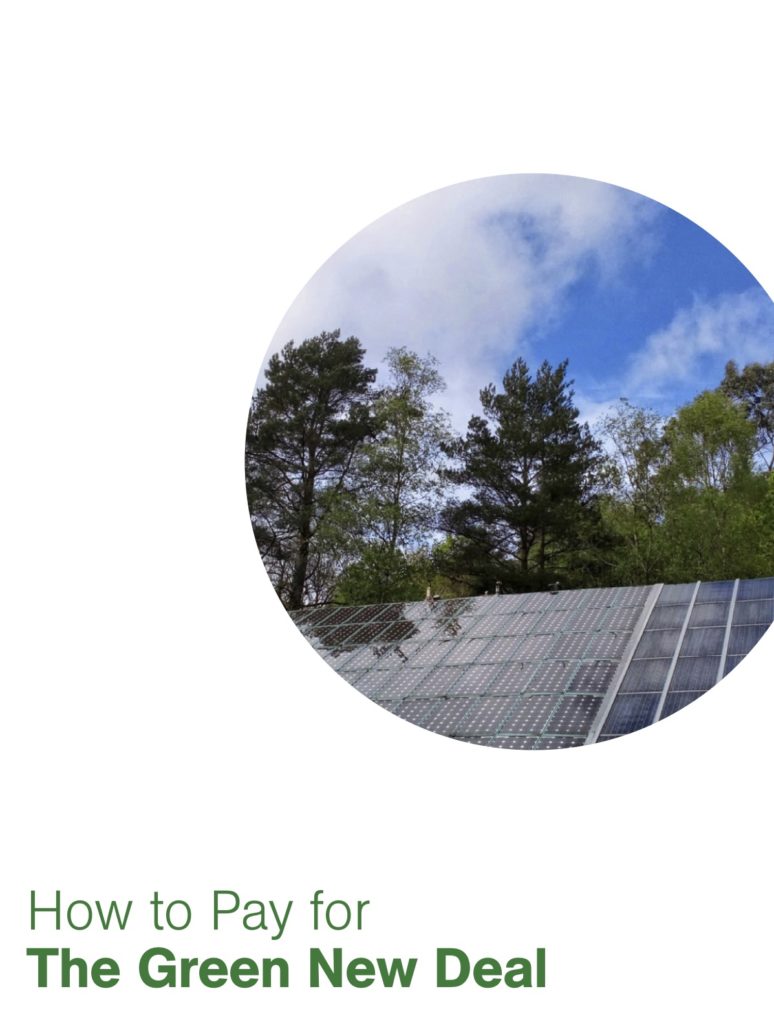Debate in the 2019 election campaign in the UK has focussed on whether spending plans proposed by political parties are affordable. This, the Group argues, is to fundamentally misunderstand the way that government investment works. What matters is not what government borrows to invest, but what it invests in and how.
This new briefing, How to Pay for the Green New Deal, sets out how a transformational Green New Deal can be financed.
A huge, positive programme of work is needed to prevent climate breakdown and respond to pressing social concerns, known as a Green New Deal. This briefing answers the question of how to pay for it, and challenges the arguments that have been raised in the 2019 election campaign debate.
A comprehensive Green New Deal costing around £100 billion a year could, as this briefing sets out, be financed by a government using a judicious mix of new credit and existing savings. This would create a safe place for our pensions and savings, which could be supported by small changes to existing tax incentives, while investing in our collective future by modernising our infrastructure to meet the challenges of climate and social crisis.
There are other things that can provide funding, too – ending the subsidies currently given to fossil fuels, cancelling investments like the £80 billion HS2 is likely to cost and instead investing it in a wider range of improvements to the rail network spread across the country.
After years where we have been told that we can’t spend on the things that we need – like transforming society so that it is fairer and we can live within our environmental means – because “the markets wouldn’t allow it”, or because “we can’t afford it”, many people question whether we can afford to update our inefficient systems and outdated technologies and find new ways of doing things. As this briefing sets out not only can we pay for the Green New Deal, doing so would deliver multiple environmental and social benefits, transforming all our lives for the better.

